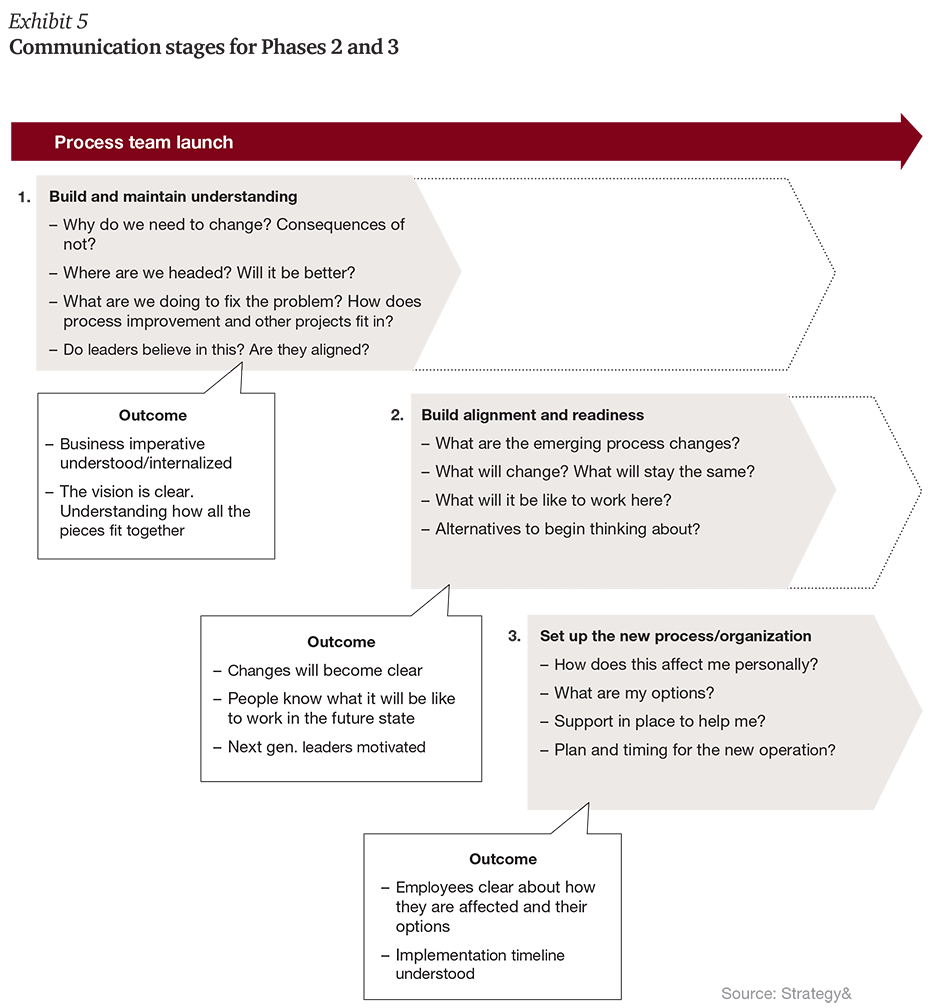Change management perspective
Executive summary
Managing change is a critical component of any major transformation. It is a necessary process that helps companies successfully implement new strategies. Change management gets results by building sponsorship from the top, creating leaders who will act as change agents, and by changing behaviors in frontline teams and individual employees in business units.
Communications
Communications are a crucial change management tool in realigning culture and building commitment and enthusiasm for change. Carefully designed and deliberately timed communications will be critical to the success of the change program.
The best change programs reinforce core messages through regular, timely advice that is both inspirational and actionable. Communication is both outbound and inbound. It should be targeted so as to provide employees the right information at the right time, to solicit their input and feedback and to check in on their emotional response to what they’ve heard. Change programs often require over-communication through multiple, redundant channels. However, communication must be timed, coordinated, consistent, and personal. The best change leaders speak from the heart and convey a deep sense of personal commitment. They tell a consistent story and view telling the story as a key responsibility in the change process. The detailed communications plan will fall out of Phase 1 work but should adhere to a set of common guiding principles:
- Build a communications plan early (Exhibit 5).
- Link message to strategic purpose/direction, so employees will understand need for change.
- Be honest and open, but recognize when “open” doesn’t have to mean all information available every step of the way.
- Set realistic expectations — outline potential implications early and don’t gloss over potentially negative messages.
- Provide for two-way communications.
- Identify each major constituency (inside and outside of Allstate), frame their needs, and link the messages to those needs.
- Be conscious of the need to cascade ownership level-by-level.
- Rely extensively on engagement through in-person dialogue with leaders; use broadcast vehicles only as one element of communications.
- Put greater emphasis on being proactive versus reactive — send out messages in advance, before the hue and cry becomes too great.
- Send the same message repeatedly through alternative channels.
- Find the right places to create the symbols and “moments of truth” to communicate by actions.



